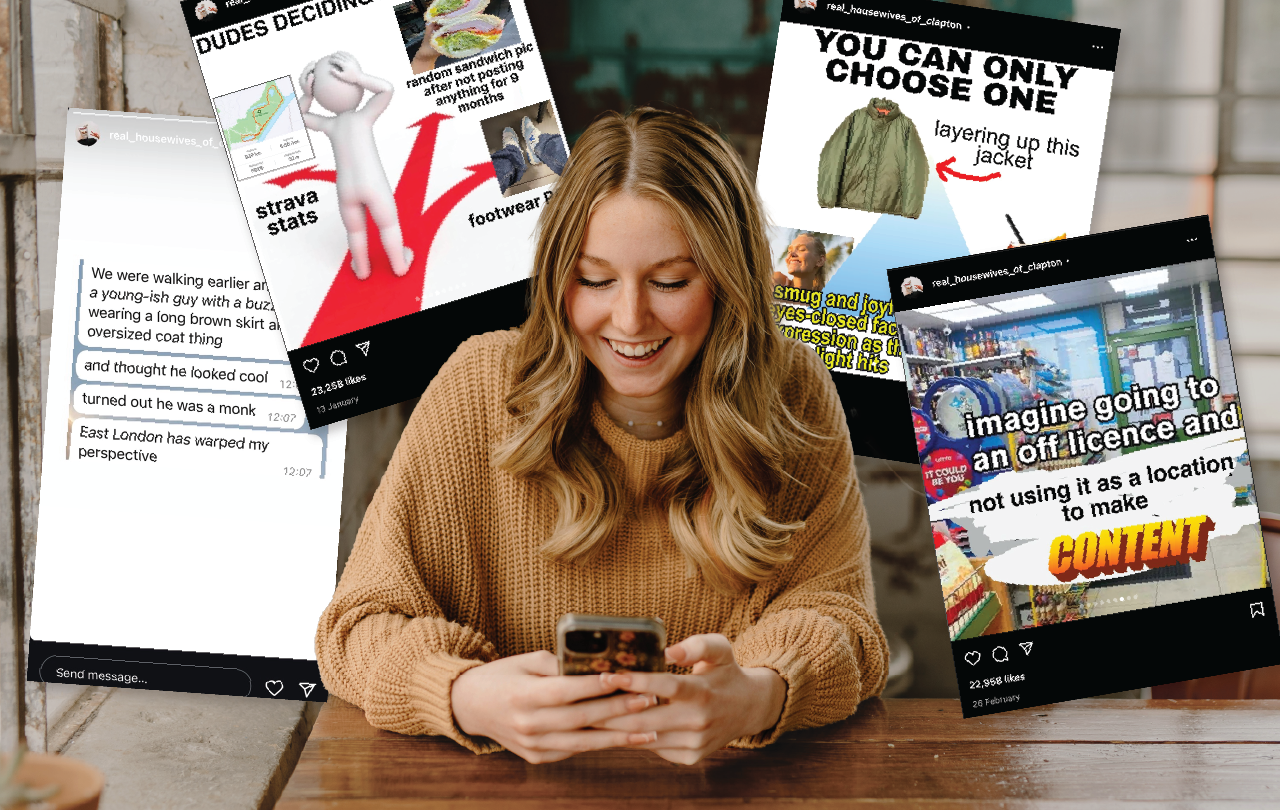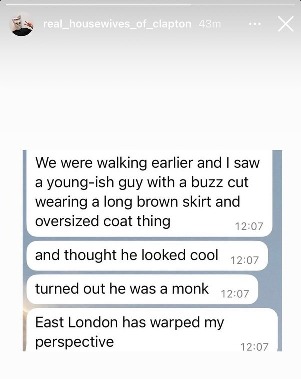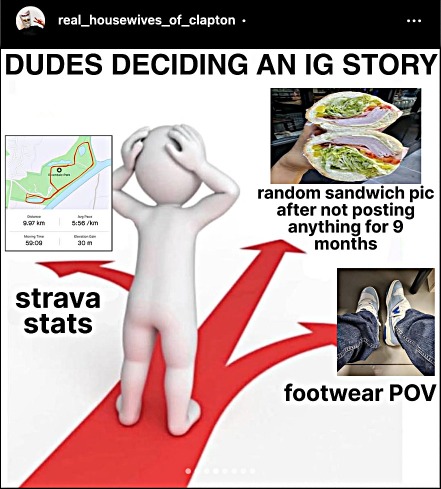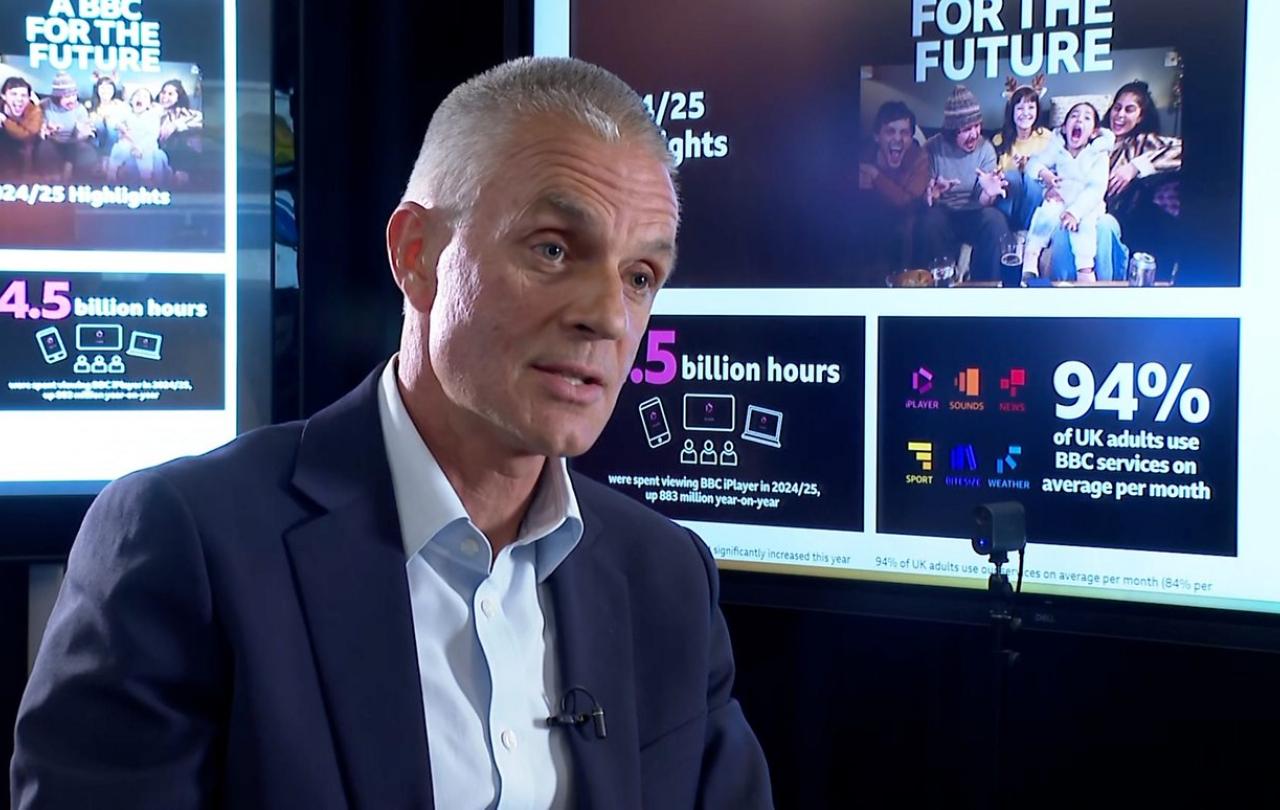
How might an Instagram account summarise someone who’s a proficient user of Lime bikes, a lover of ‘natty wine,’ and has an affinity for small plates?
Sure, a particular East London ‘creative’ type probably came to mind. And you’d be right. However, perhaps there’s something more to all that social media signalling - a gesture toward late-stage capitalism, the ethical, the bourgeoisie, the material, or, dare I say, the spiritual?
Great religious texts are lived before they are written, and the prominent Instagram account Real Housewives of Clapton intuitively inscribes our new scriptures. (With Hanna Crosbie as its prophet. Along with Socks House Meeting and Dalston Super Stoned.) However, these new scriptures are not written on sacred scrolls but on digital tablets: memes.
Real Housewives of Clapton help us to see the vestments East Londoners are adorned with (new converts should begin with an Acne scarf), the pilgrimage sites to be walked (Broadway Market in Salomons), and the sacred meals one should partake of (rotisserie chicken is in vogue, but Jolene Newington Green is the cathedral). Nevertheless, young Londoners (like the rest of the Western world) are increasingly becoming more religious, not least Christian. As Lauren Westwood and Graham Tomlin discuss. But does all this newfound fervour always come leaping into traditional religion? I’m still not sure.
Ditching the poetic-spiritual contours of sacred writing for the potency of Microsoft Word ‘fancy’ text hastily pasted over stock images, Real Housewives of Clapton is delivering our new scriptures en masse, on pace with the changing of trends themselves. While memes are a longitudinal study nightmare for distilling emergent truths, they are great way to laugh whilst on the toilet. And the consumers of these LOLs? Those involved in the sub-culture themselves. It's post often generate tens of thousands of likes.
Real Housewives of Clapton articulates the aesthetics of our contemporary religiosity as it manifests in the everyday - so much so that religious attire re-emerges as a genuinely distinct perception of ‘East London’ attire, see the post below.. Religion is that term used to describe a community’s ritual, aesthetic, holy scriptures, sacred sites, and understanding of the Divine and how this relates to humanity.

Precisely because the projected identities these East London meme-dealers expose are entangled with a self-awareness for the ethical, it naturally gravitates toward the religious. To consider the aesthetics of ethics is to delve into theology. To meander on the aesthetics of a subculture in this way, then, is to be a theologian. The creators behind Real Housewives of Clapton are East London’s Rowan Williams (the 104th Archbishop of Canterbury, not the actor), Germany’s Dietrich Bonhoeffer, or Medieval Europe’s Hildegard of Bingen. They’re reading the signs of the time and distilling it into potent visual metaphors.
So, what might we see if we were to read the memes of Real Housewives as theologians? Well, perhaps we can trace an eschatology (a fancy word for discussing the End Times).
The East London world is your oyster, but only insofar as it’s captured. And it needs to be a captured reality shared online so that we can feel seen.
In heightening our awareness of and orienting the sub-culture around “little things”—small plates, chippies, situationships, drinks, vitamin D—East Londoners are highly aware of the particulars of creation and how they can be in service to a more satisfactory existence.
A few months ago, Real Housewives shared this meme about running. Everyone knows someone who joined a run club in recent months; sharing the run map has become a “flex” on your friends (becoming a national security threat in the USA). Yet, the account contextualises this with the phrase, ‘after not posting anything for 9 months.’ There is, undergirding East London, particularly for men it seems, the felt need to maintain an air of nonchalance, aloofness, or, indeed, mystery.

Arguably, this nonchalance is from the same guy on Broadway market who ghosted you after the fifth date. Or, as appears every public holiday, the mysteriously unemployed DJ acquaintance who, via his close friends' list, is at his parents’ holiday home in Dorset.
Nevertheless, the account shared another meme a month later, see below, signalling something deeper. The identity of distance or mysterion is undercut by a more potent insight: we are obsessed with projecting our identities. Taking this to its logical absurdity, Real Housewives contrasts the purchase of a £1.29 Twix with the nostalgia of an off-licence. The East London world is your oyster, but only insofar as it’s captured. And it needs to be a captured reality shared online so that we can feel seen.

Participating in this religion includes evangelism through one’s online identity. But, in contrast to popular streams of culture, this aesthetic and its symbolic world only makes sense for those who live in East London. In other words, the Cult of East London doesn’t find its attraction because you might get global stardom. Instead, partaking in this particular cultural aesthetic signals to those you meet on Dalston High Street that you understand them and, hopefully, they might understand you.
Converging across both “social media mystery boy” and its always-online antithesis is the undergirding desire for our projected identity to be known.
As this meme about the sun coming out reveals, behind its comedic options—a designer jacket, spritz and ciggie, or the London sun—is a more dormant reality: we need all three.

A Freudian reading might interpret the designer jacket as the need for physical touch, the spritz as a plea for community, and the London sun as the need for God—the cult of Sol Invictus, perhaps. Maybe. Or, in a theological key, through the triangulation of branded cohesivity, a little drink, and the bodily calmness to feel as though we can finally close our eyes, we might actually find peace.
The garments Real Housewives self-abasingly propagates suggest that the spiritual lives of East Londoners are genuinely concerned with ethics. In aversion to fast fashion, we wear things that promote our being seen beyond a glance. This held-gaze has both to do with the self and the plea for us to look more seriously at the world we find ourselves in. This shift toward a more substantive looking subtly nods to an eschatology of peace.
The spiritual lives of East Londoners gravitate toward a longing for peace that is temporally filled with ethically just choices but is embodied unseriously. We laugh with and double-tap The Real Housewives of Clapton’s memes because we know this identity won’t save us. But spending one afternoon in London Fields wearing an iconic fit amidst the blazing British sun might just give us a taste of eternal serenity.
Celebrate our 2nd birthday!
Since Spring 2023, our readers have enjoyed over 1,000 articles. All for free.
This is made possible through the generosity of our amazing community of supporters.
If you enjoy Seen & Unseen, would you consider making a gift towards our work?
Do so by joining Behind The Seen. Alongside other benefits, you’ll receive an extra fortnightly email from me sharing my reading and reflections on the ideas that are shaping our times.
Graham Tomlin
Editor-in-Chief





